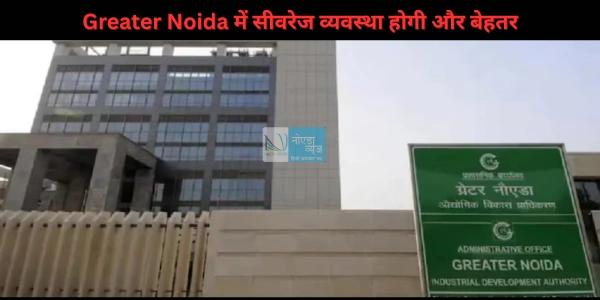prof. Dr. Ritesh Srivasrava
Some are optional and some mandatory, depending on where you
live
An automobile insurance policy can protect you against financial losses if
you’re involved in an accident. Auto policies consist of several types of
coverage, often six in total. Depending on the state where you live, some of
these coverage’s may be mandatory, while others will be optional.
Key Takeaways
Car insurance can protect you financially if you’re involved in an
accident that results in property damage, injuries, or the death of
another person.
Car insurance policies are made up of different types of coverage that
cover different risks.
Some types of car insurance coverage are required by state law, while
others are optional.
There are also other types of optional coverage that you may want to
consider.
Six Types of Car Insurance Coverage, Explained
The six major types of car insurance coverage are:
Bodily Injury Liability (BI)
Property Damage Liability (PD)
Medial Payments or Personal Injury Protection (PIP)
Collision
Comprehensive
Underinsured/Uninsured Motorist
Here’s a closer look at how each one works.
Bodily Injury Liability Insurance (BI)
Bodily injury liability insurance is designed to pay medical expenses for
someone else if you injure them in an accident where you’re deemed to be
at fault. This coverage can apply to you and to anyone else listed as a driver
on your policy.1 2
Authored by prof. Dr. Ritesh Srivasrava
Property Damage Liability Insurance (PD)
Property damage liability insurance also covers you in accidents in which
you’re at fault. It pays for repairs to the other driver’s vehicle or other
property you may damage.3
Medical Payments or Personal Injury Protection Insurance (PIP)
If you or a passenger in your vehicle are hurt in an accident, medical
payments or personal injury protection coverage can help pay any resulting
medical bills. This type of coverage can also cover lost wages if you or an
injured passenger are unable to work or funeral expenses if someone in your
vehicle dies because of an accident.3
Collision Coverage
While property damage liability insurance pays for damage to someone
else’s vehicle or property following an accident, collision coverage pays for
damage to your own vehicle or property. That can include damages caused
by a collision with another vehicle or hitting a stationary object, such as a
tree or fence.3
Comprehensive Coverage
Comprehensive coverage reimburses you for loss, theft, or damage to your
vehicle caused by something other than a collision. For example, that can
include fire damage, damage from hail and other falling objects, or damage
caused by animals.3
Underinsured/Uninsured Motorist Coverage
Underinsured motorist coverage can protect you if you’re involved in an
accident where the driver who’s at fault doesn’t have sufficient insurance.
Uninsured motorist coverage is meant to protect you if you’re in an accident
with a driver who has no insurance at all.3
If you’re financing a vehicle, your lender may require that you take out
collision and/or comprehensive coverage and keep it until the loan is paid
off.
How Insurance Coverage Requirements Vary by State
Every state but New Hampshire requires you to have both bodily injury
liability and property damage liability coverage. (New Hampshire drivers do
Authored by prof. Dr. Ritesh Srivasrava
have to meet certain financial responsibility requirements to forgo liability
coverage.)4
In the remaining states, there are also minimum dollar amounts for the
coverage you must carry. Bodily injury liability can have two dollar limits:
one per person and another per accident, while there’s only one limit for
property damage.5
Coverage limits are typically expressed in your insurance policy by a
sequence of numbers. So, for example, if your policy has a $25,000 bodily
injury liability limit per person, a $50,000 bodily injury liability limit per
accident, and a $25,000 property damage liability limit, your policy would
express it as 25/50/25.
It’s important to note that the minimum coverage limits are just that—
minimums. You can opt to purchase coverage above those limits, and that’s
often a smart idea.
Whether you’re legally required to carry medical payments/PIP insurance,
collision coverage, comprehensive coverage, or underinsured/uninsured
motorist coverage depends on your state. And again, the minimum coverage
amounts you’re required to have for each one can vary.
Other Kinds of Optional Car Insurance Coverage
Depending on the insurance company, you may be able to add other types
of car insurance to your policy besides the six listed above.
For example, that might include:
Roadside assistance insurance
New car replacement coverage
Gap insurance
Towing and labor insurance
Rental car reimbursement insurance
There are also scenarios that may require specialty insurance coverage. For
example, if you have a classic or antique car you may need an insurance
policy that takes the car’s age, value, and how often you drive it into
account. You could also purchase specialty coverage for a vehicle that you
leave in storage or if you use your car to offer ride-sharing services.
Authored by prof. Dr. Ritesh Srivasrava
What Happens if You Don’t Have Car Insurance?
Regardless of where you live, it’s against the law to drive a vehicle without
car insurance (or meeting financial responsibility requirements, in the case
of New Hampshire. Financial responsibility laws require you to furnish proof
that you can pay damages yourself if you’re involved in an accident.)6
If you drive without insurance and an accident occurs, several things can
happen. First, you could be ticketed and/or charged with a driving violation,
according to the laws in your state and based on the circumstances of the
accident. At a minimum, you may have your driver’s license suspended or
revoked.6
Additionally, you could face a civil lawsuit if you’re at fault in the accident
and cause physical injury or property damage. Without an insurance policy
to pay damages, you could be held financially responsible for covering
someone’s medical bills and/or for repairs to their vehicle. Depending on the
extent of their injuries or the property damage, that could be financially
devastating.6
Shopping for Car Insurance
If you need car insurance, it pays to research different companies and
policies first. Then get quotes from several insurers. Pay particular attention
to the policies’ premiums and deductibles so you can make a fair cost
comparison.
Discover more from Noida Views
Subscribe to get the latest posts sent to your email.





